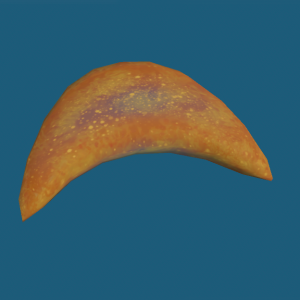Nitroplast: Difference between revisions
No edit summary |
mNo edit summary |
||
| Line 16: | Line 16: | ||
}} | }} | ||
The Nitroplast is a membrane-bound | The Nitroplast is a membrane-bound organelle used to produce '''Ammonia''' {{CompoundIcon|image=AmmoniaIcon.png|internalName=ammonia}}, one of the components of growth for cellular reproduction. Performs '''Anaerobic Nitrogen Fixation''' to convert gaseous '''Nitrogen''' {{CompoundIcon|image=NitrogenIcon.png|internalName=nitrogen}} and '''ATP''' {{CompoundIcon|image=ATPIcon.png|internalName=atp}} into '''Ammonia''' {{CompoundIcon|image=AmmoniaIcon.png|internalName=ammonia}}. More efficient than the prokaryotic '''[[Nitrogenase]]'''. | ||
== Requirements == | == Requirements == | ||
Revision as of 00:55, 10 November 2024
The Nitroplast is a membrane-bound organelle used to produce Ammonia ![]() , one of the components of growth for cellular reproduction. Performs Anaerobic Nitrogen Fixation to convert gaseous Nitrogen
, one of the components of growth for cellular reproduction. Performs Anaerobic Nitrogen Fixation to convert gaseous Nitrogen ![]() and ATP
and ATP ![]() into Ammonia
into Ammonia ![]() . More efficient than the prokaryotic Nitrogenase.
. More efficient than the prokaryotic Nitrogenase.
Requirements
A cell must have a Nucleus to evolve Nitroplasts.
Processes
Aerobic Nitrogen Fixation
Fixes atmospheric Nitrogen ![]() into Ammonia
into Ammonia ![]() by expending energy. Rate scales with the amount of environmental Nitrogen
by expending energy. Rate scales with the amount of environmental Nitrogen ![]() and Oxygen
and Oxygen ![]() . More efficient than the equivalent process in Nitrogenase.
. More efficient than the equivalent process in Nitrogenase.
Modifications
No modifications.
Effects
No effects.
Upgrades
No upgrades.
Strategy
We recommend replacing Nitrogenase with Nitrogen-Fixing Plastids when your cell develops a Nucleus, as the latter can more efficiently generate resources needed for reproduction.
As with Nitrogenase, Nitrogen-Fixing Plastids are a sensible choice if you have ATP ![]() to spare. Creating reproduction resources yourself removes a limiting factor on your ability to progress through generations more quickly. This will also require gathering extra Phosphates
to spare. Creating reproduction resources yourself removes a limiting factor on your ability to progress through generations more quickly. This will also require gathering extra Phosphates ![]() , which can be gained from floating chunks of crystal, or from purple clouds.
, which can be gained from floating chunks of crystal, or from purple clouds.
Scientific Background
Nitroplasts have been shown to have evolved from endosymbionts in eukaryotic cells.
